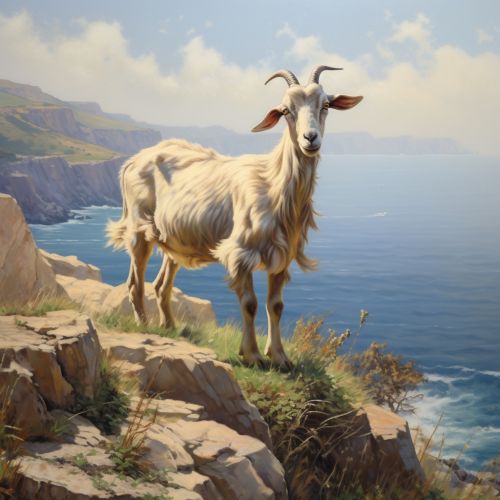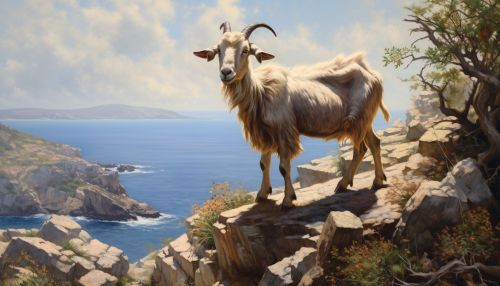Kri-kri
Description
The Kri-kri (Capra aegagrus cretica) is a feral goat inhabiting the Eastern Mediterranean, particularly in the island of Crete and three small islands just offshore (Dia, Thodorou, and Agii Pantes). It is also known as the Cretan goat, Agrimi, or Cretan Ibex.


Taxonomy
The Kri-kri is a subspecies of the wild goat (Capra aegagrus). It was first described by the German naturalist Heinrich Kretschmer in 1895. The scientific name Capra aegagrus cretica reflects its Cretan origin.
Physical Characteristics
The Kri-kri has a light brownish coat with a darker band around its neck. It has two horns that sweep back from the head. In males, these horns are larger and more curved, while in females they are shorter and straighter. The body size of a Kri-kri is similar to that of a domestic goat, with males being slightly larger than females.
Habitat and Distribution
The Kri-kri prefers rocky terrain, cliffs, and gorges. It is an agile climber, adapted to the steep and rugged landscapes of Crete. The Kri-kri is a shy and elusive creature, making it difficult to study in the wild. Today, the Kri-kri is found only in Crete, Dia, Thodorou, and Agii Pantes. It was once more widespread, reaching as far as the Cyclades and the Aegean islands.
Behavior and Ecology
The Kri-kri is a ruminant, feeding on a variety of plants. It is most active during the early morning and late afternoon. It is a social animal, living in small groups led by a dominant male. The mating season is in the fall, and the gestation period is approximately five months.
Conservation Status
The Kri-kri is classified as Vulnerable by the IUCN. Its population has been declining due to hunting, habitat loss, and hybridization with domestic goats. Efforts are being made to protect and conserve this unique species.
Cultural Significance
In Crete, the Kri-kri holds a special place in local culture and folklore. It is often featured in traditional art and literature. The Kri-kri is also a symbol of the island's unique biodiversity and natural beauty.
